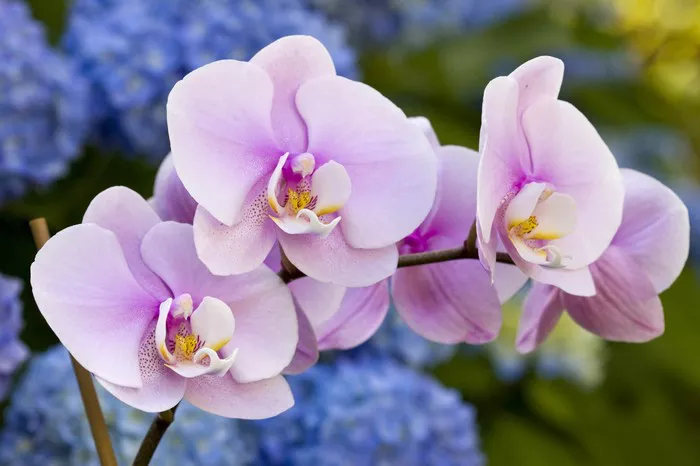Orchids, with their delicate and exotic blooms, captivate enthusiasts worldwide. However, even the most seasoned orchid caretaker may encounter a disheartening dilemma: when their cherished orchid ceases to flower. Fear not, for this article serves as a comprehensive guide to navigate the enigmatic realm of non-flowering orchids. From understanding orchid flowering cycles to identifying underlying causes and implementing strategies to encourage reblooming, we delve into the intricacies of orchid care with precision and expertise.
1. Understanding Orchid Flowering Cycles:
Orchids, unlike some flowering plants, do not adhere to a perpetual blooming state. Instead, they follow distinct flowering cycles interspersed with periods of dormancy. These cycles vary among orchid species, with some boasting blooms that last for several months while others may only endure for a few weeks. For instance, Phalaenopsis orchids typically exhibit blooms that endure for two to three months, whereas Dendrobium orchids may have shorter blooming periods lasting four to six weeks.
The timing and duration of these blooming cycles are influenced by various factors, including light, temperature, humidity, and the orchid’s specific genetic makeup. Adequate light exposure, typically filtered sunlight or artificial lighting, is essential for triggering flowering in orchids. Additionally, maintaining optimal temperature and humidity levels within the orchid’s preferred range fosters healthy blooming. Slight fluctuations in these environmental conditions can affect the timing and intensity of flowering, emphasizing the importance of consistency in care.
2. Identifying the Cause of Non-Blooming:
When faced with a non-blooming orchid, it is imperative to conduct a thorough assessment to pinpoint the underlying cause. Several common factors may contribute to a lack of flowering, including insufficient light, temperature stress, watering issues, nutrient deficiencies, or natural dormancy periods.
Insufficient Light: Orchids require adequate light exposure to thrive and bloom. Insufficient light can hinder photosynthesis and impede the production of flower buds. To remedy this issue, consider relocating the orchid to a brighter location with indirect sunlight or supplementing natural light with artificial lighting solutions, such as full-spectrum grow lights.
Temperature Stress: Orchids thrive within specific temperature ranges, and deviations from these optimal conditions can disrupt their flowering cycles. Extreme temperatures, whether excessively hot or cold, can inhibit blooming and overall plant health. Ensure that the orchid is situated in an environment with stable temperatures conducive to its species requirements.
Watering Issues: Proper watering practices are paramount for orchid health and flowering. Overwatering or underwatering can lead to root rot, dehydration, and subsequent bud drop. Maintain a consistent watering routine, allowing the orchid’s growing medium to dry out slightly between waterings. Additionally, consider using a well-draining potting mix tailored to orchids to prevent waterlogged conditions.
Nutrient Deficiencies: Orchids rely on balanced nutrition to support vigorous growth and blooming. A deficiency in essential nutrients, such as nitrogen, phosphorus, or potassium, can impair flowering and overall plant vitality. Regularly fertilize orchids with a specialized orchid fertilizer formulated to meet their unique nutritional needs. Follow the manufacturer’s instructions for application rates and frequency to prevent fertilizer burn and nutrient imbalances.
Dormancy Period: It’s important to recognize that orchids, like many plants, undergo natural dormancy periods characterized by reduced growth and flowering activity. During these phases, the orchid conserves energy to prepare for future blooming cycles. If all other care parameters are optimal and no signs of stress are evident, it’s possible that the orchid is simply in a dormancy period. Patience and consistent care are key during this time, as the orchid will likely resume blooming once its dormancy phase concludes.
3. Steps to Encourage Reblooming:
Rejuvenating a non-flowering orchid requires a strategic approach tailored to address the specific underlying cause. Implementing the following steps can help stimulate new growth and encourage reblooming:
Pruning: Pruning orchids is a beneficial practice that promotes new growth and flowering. Remove any dead or decaying foliage, spent flower spikes, or damaged roots using sterilized pruning shears. Pruning encourages the orchid to allocate resources towards producing new flower spikes and enhances overall plant aesthetics.
Adjusting Care Routine: Based on the identified cause of non-blooming, adjust the orchid’s care routine accordingly. This may involve increasing light exposure, fine-tuning temperature and humidity levels, modifying watering frequency and volume, or adjusting fertilization practices. Monitor the orchid closely and make gradual changes to avoid shocking the plant.
Repotting: Periodic repotting is essential for maintaining orchid health and vitality. If the orchid has outgrown its current container or if the growing medium has become degraded, consider repotting it into fresh, well-draining potting mix. Repotting also presents an opportunity to inspect the orchid’s root system for signs of disease or overcrowding and to divide mature plants to encourage new growth.
Patience: Above all, patience is a virtue when coaxing an orchid back into bloom. Reblooming is a gradual process that requires time and consistent care. Resist the temptation to over-manipulate the orchid’s environment or aggressively intervene, as this can exacerbate stress and hinder blooming progress. Trust in the resilience of your orchid and allow nature to take its course.
Conclusion
In conclusion, navigating the complexities of non-flowering orchids requires a blend of scientific understanding, attentive observation, and proactive care. By comprehensively assessing the orchid’s environment, identifying potential stressors, and implementing targeted strategies to promote reblooming, orchid enthusiasts can revitalize their beloved plants and revel in the splendor of their blooms once more. Remember, with patience, perseverance, and a dash of horticultural know-how, every orchid has the potential to flourish anew.


